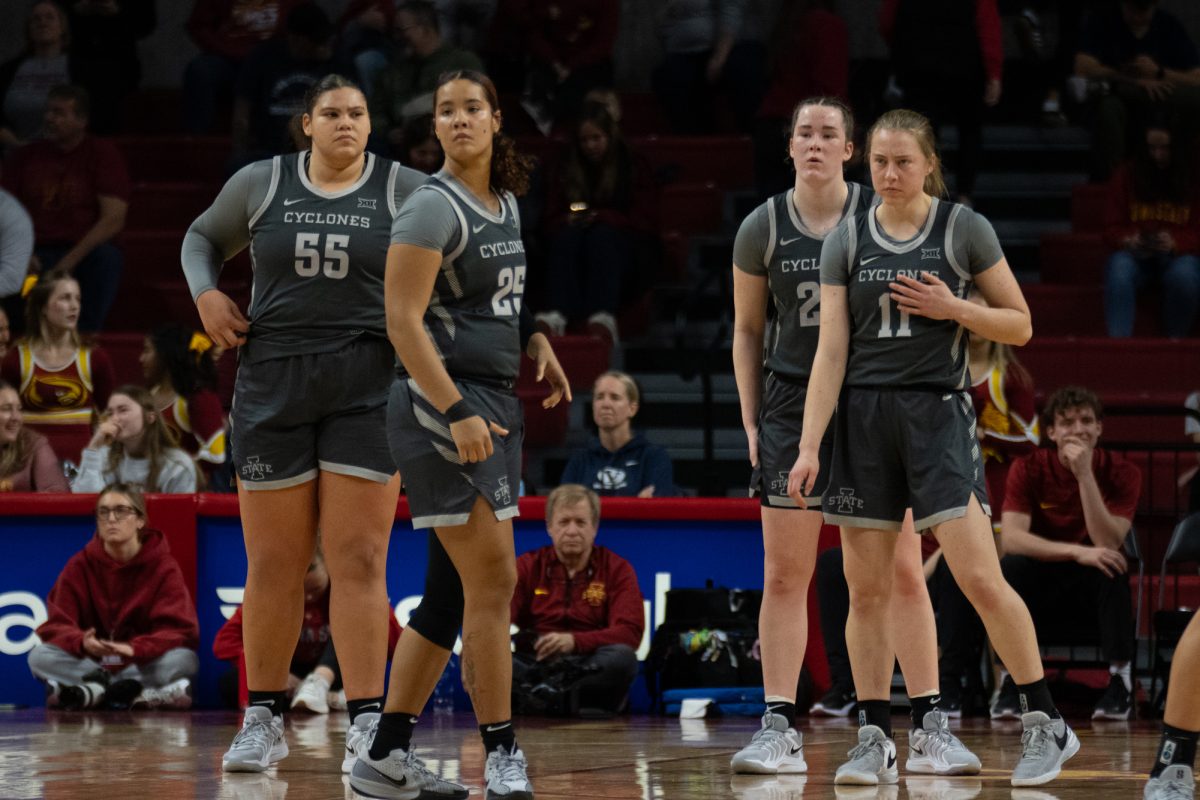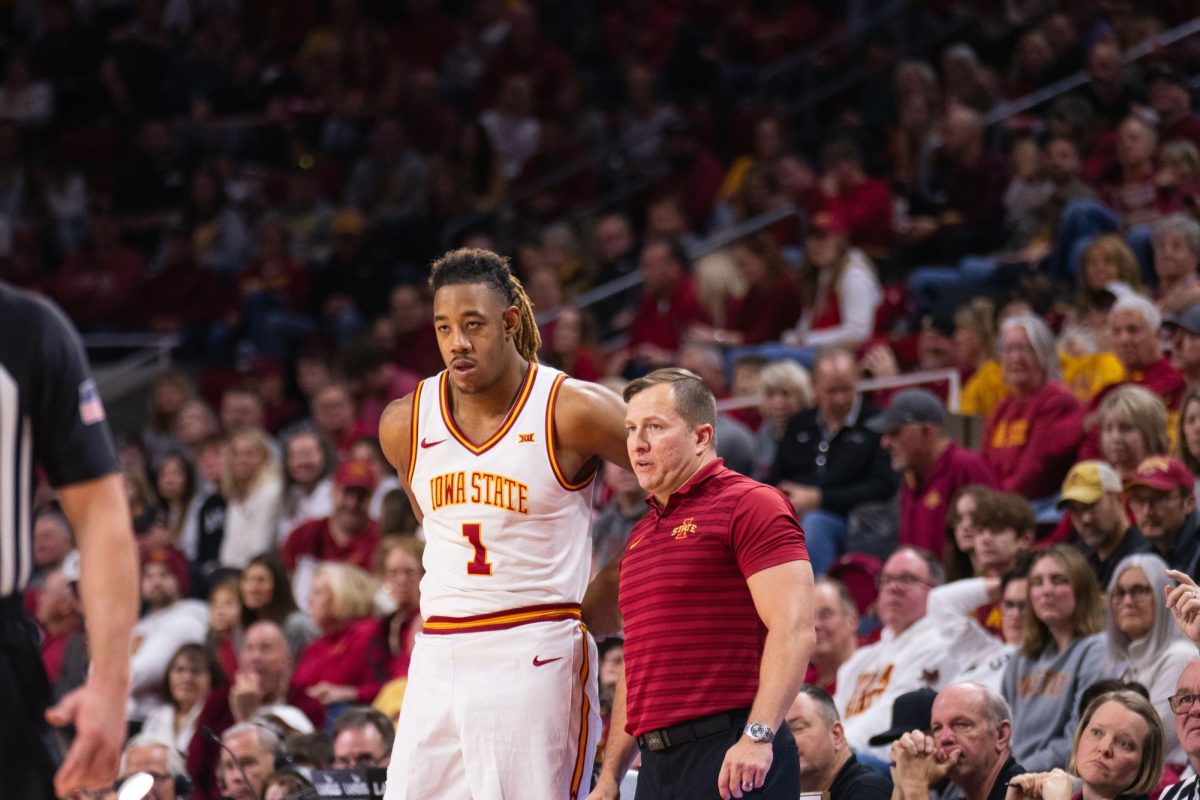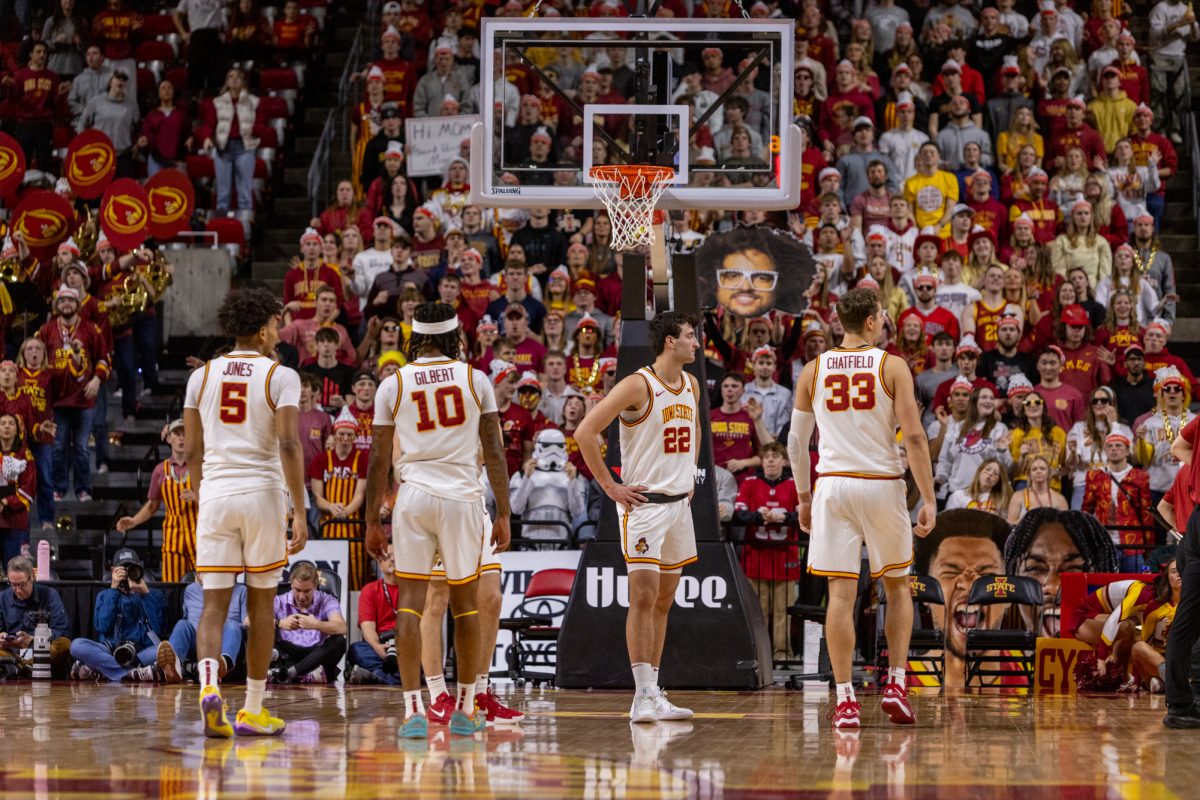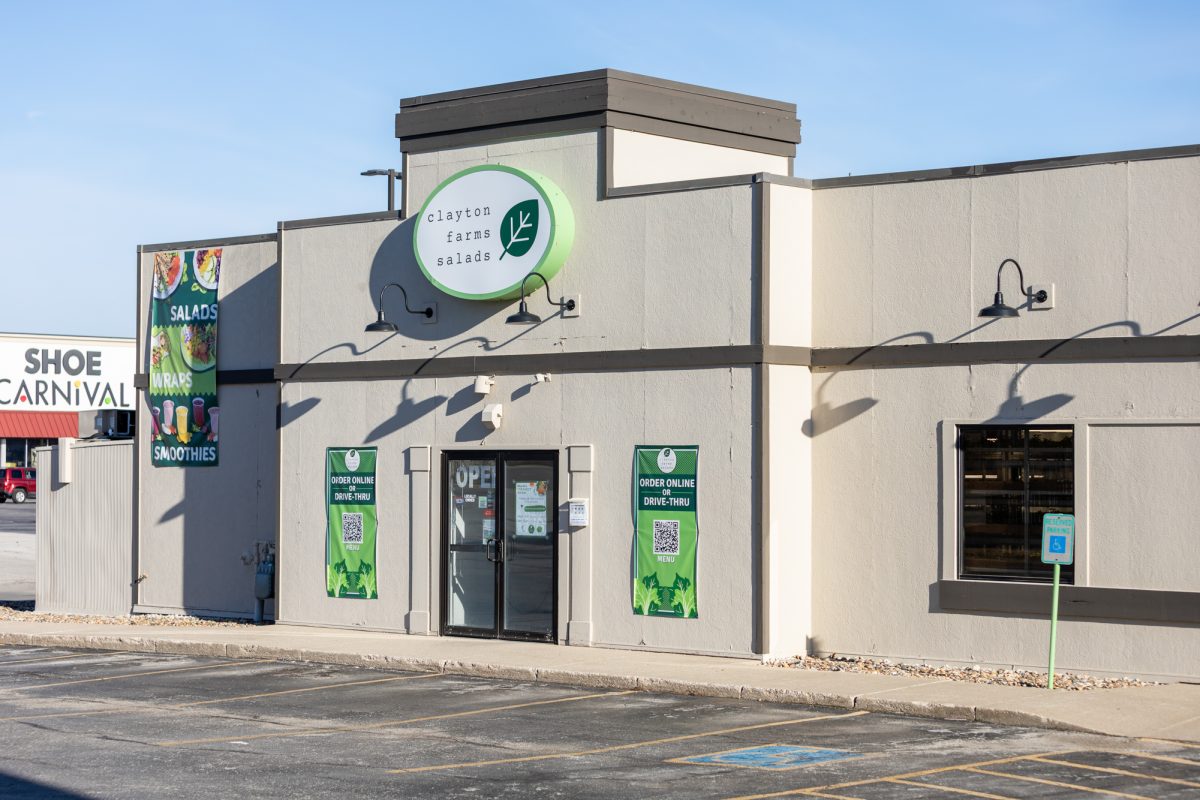One-on-one: Dave Faux discusses University Museums, Farm House origins
May 28, 2014
Dave Faux is an interpretation specialist for University Museums. He has worked for University Museums full time for just more than a year and previously worked for it as a student.
Faux graduated from Iowa State in 2012 with a degree in history. He now helps schedule tours, organize and operate museums and create partnerships with professors or classes at Iowa State.
How many years have you been working for Iowa State and how many years have you been in your position now?
I’ve been in this position officially for just over a year. But I started with the museums about three and a half years ago as a student. I came back to school, working for a degree in history and I knew I wanted to get into museums and so I took a museum studies class. It was the only museums study class that they offered. It was a 200-level clothing and textiles class and I was coming back as a nontraditional student. I had already had all of my freshman and sophomore classes, but since I wanted to go into museums I decided to take it on a whim. I was like, ‘I really want to see if that’s something I want to do career-wise.’ So I took it and met Lynette Pullman, the director, in that class and through that found an internship — an assistantship — at the Farm House. Worked my way through, graduated and they had a position open. I applied and got it. It was a really serendipity, and happenstance was a big part of it, but I love what I’m doing. So I’ve been here for about three and a half years total but a little over one year full time.
How much interaction do you have with students?
A fair amount. It is kind of hard to judge percentage-wise, but I think a big part of my daily interaction when I’m working in the museums is students coming in or being here as part of a tour or a class integration. So that’s one of my primary parts of my job is interacting with students, whether that’s giving tours or working as a resource, I suppose, for a class.
What is the most challenging part of your job?
We’re a really small staff. I think the most challenging thing is there’s just so much to do. It’s a fun job. I know Director Pullman, she said one of the things about working in the museum is it’s kind of overwhelming how much needs to be done but you enjoy almost all of it. You know, they say if you can find a job that you enjoy doing, you won’t work a day in your life. I wouldn’t go that far. I don’t enjoy everything so much it doesn’t seem like work but it really is a joy. The biggest challenge I think we have is the nation’s largest collection of public works of art; we have three museums. We do all of that, we manage all of it, with like five and a half staff members. Maybe six now. We’ve started to raise up a little bit. But budget cuts, when things got tough, they cut a lot. The museum staff went from I think 12 people at one point down to three at the minimum. We’re gaining a little bit back at a time, but having so much to do and the small staff is probably the biggest challenge. It’s a fun challenge.
What’s the most rewarding part of your job?
I think the moment, and I have this moment in almost every tour I give, is when all of this art and all the museums on campus are public. They’re primarily for the students to help really facilitate an appreciation of the aesthetic, an appreciation of the art and the history on campus. And that moment in almost every tour where you see someone really taking ownership of it, looking around and going, ‘Wow, this is my campus. I love this work of art,’ or ‘I hate this work of art.’ I know — being a student — it’s really easy putting on the horse blinders and go from point A to point B because there’s so much that needs to be done and you find the things that you’re really interested and you kind of half to pick and choose. But those moments when students look outside of that and they see something really special and you hope that that’s something that really resonates with them and that they remember after graduation as one of those defining things that was a part of their experience was the art on campus that they’ve become familiar with.
Can you describe just a typical day at your job?
Oh my goodness. There really isn’t a typical day but I’ll try. Our museums are open fairly limited times. So [the Farm House Museum] opens at noon. The other two museums open at 11 a.m. So my typical day, getting here to the museums office at about 8 o’clock. In between that 8 and 11 period, if I’m in a museum, that’s the time I have to meet with co-workers, meet with faculty members, trying to organize the museum work but then also trying facilitate faculty getting involved with the museums. Then we open up the museums and then we’ll have open hours until 4 and then we’re done at 4. So during the open hours, trying schedule a time to meet with professors. So during that period of time from 8 until 11, there’s a lot of tours being scheduled as well. During the summer, it’s a little but less busy I suppose with class tours, but there are still some. And then when the fall gets here, we have just an enormous amount of work getting the classes and the student coming in, to get that sort of set up for fall tours. We also have during the summer — specifically during the summer and during winter break — a lot of exhibition changeover. So the Christian Petersen Art Museum, for instance, we’re going to be closing that show early August, right after the summer session gets done, and we’ll completely change it out. The artwork that’s in there, the shadow art of Mac Adams, that will all be packaged up and shipped off and then we’ll install a new exhibition. I think this fall it’s going to be Gwen Bruel. And we’ll be doing the same with the Brunnier [Art Museum], and the Brunnier is a much larger space but we’ll be closing down that exhibition and putting in a new exhibition in there as well. It does vary. The typical day is really hard to say except that typically everyday is atypical.
Are there any events or services that the university museums have that students don’t know about?
I think there is a ton. We have a website and on the website we have University Museums information and what not, but also we have our emails there. Students are welcome and encouraged if they have questions about the art on campus, they have any thoughts about it, they want more information to give an email to myself or one of my co-workers. I know some of the classes that we integrate with will have those classes come to the museum and 75 percent of them will be like, ‘I never knew this was around.’ So the museums themselves I think are probably the biggest feature that we have that students just don’t know about. It’s free and open to the public. It’s a very cultural sort of experience. For instance, right now we have in the Brunnier Art Museum, two Tang Dynasty horses from China around 500 A.D. I’ve had people come in there and they’ve seen them and they’ve just been in shock. They’re better examples of that ancient terracotta horse than some of the big museums have. So we have these really incredible objects and opportunities that people just don’t realize. And we change our exhibition so frequently that somebody that came in last year, if they came in again this year, things are going to be completely different. So just the knowledge that, ‘Oh it’s not going to be the same, it’s going to be different.’ I think they miss out on opportunities to see world class art that they would have to travel to somewhere like Chicago or Minneapolis to see in a lot of cases.
Can you give me a brief history of the Farm House Museum?
The Farm House Museum is the very first building built on campus. It was constructed in 1860. When Iowa chose this location to start this school, it was a very modest idea and they really knew that in order for it to succeed, they needed to have federal support. There were some rumblings in D.C., there were some fights back and forth about funding this sort of agricultural school, but it hadn’t come to fruition yet. So Iowa and several other states started their own sort of schools. So in 1858, Iowa founded this school. It was the Iowa School of Agriculture and Model Farm. And in 1862, when the federal government finally enacted the Morrill Land Grant Act, that’s when everything sort of changed and the trajectory got much larger — the scope got much larger. But this house stayed as a very focal center point of that early school. We call it the Farm House Museum because when it was first utilized, the farm superintendent lived here. There were many boarding rooms for other faculty and staff members. Students that came to campus in those early times, they didn’t pay any tuition. It was free but they had to work. There were three hours a day during the week and I think Saturday as well that they would have to work. Many of them worked in the farm fields, experimental fields and those would be back behind the house. And so the Farm House was the nexus point for the students to come and get their work assignments and then go off. So it played a role of a very functional and functioning part of that early ag school. Then it became, as the school got larger, it became the homes of the heads of agriculture. So it became the home of someone more prestigious as the school got more prestigious, the head of agriculture got more prestigious. Then the deanship was created and the dean of agriculture lived here. And it was the home of deans of agriculture, with a couple breaks in between some of them, up until 1969 and then that was taken over by the museums. We opened in 1976 as the Farm House Museum. So what really kind of started fundamentally as a practical farm house for that agriculture experimentation transition into the home of the heads of agriculture and then transitioned into the museum to help ensure some of those stories and lessons of the past were at least talked about in some part.
What is your favorite room in the Farm House Museum?
I think my favorite overall room is probably the Curtiss Study which is the study that we have on the main floor. There is a picture on the table in there that shows the oldest picture of the inside of the house that we know of. It’s a picture of that room from 1907. And that was the touchstone really that was used for the house renovation. So you have this picture that shows what it looks like when Charles Curtiss lived here. And looking at that there’s a couple objects in the picture that are exactly the same. There is a chair specifically that we know was in that room and was owned by Curtiss. Some of the other objects look similar. We tried to represent the wallpaper, it looks similar. But we’re actually going to be going through a huge remodel. We’re going to be closing the beginning of July and we’re going to be closed through I believe September or so. In that period we’re going to be redoing the windows and the wallpaper in the Curtiss Study and the dining room. The wallpaper that is going to go on there, is going to match or at least come closer to matching that first wallpaper that we have in that picture at least. We’re looking for some furniture that will more closely resemble that picture as well. So I like that room. It’s exciting to see how that room changes after the summer and into the fall. There’s going to be I think an even more comprehensive story to be told, especially in relation to Curtiss.
So who was Charles Curtiss?
Charles Curtiss was the dean of agriculture. It’s kind of hazy to me but I believe the deanship, the official deanship, was created while he was the head of agriculture. So I call him the first dean of agriculture but it may have been James Wilson who was the first dean of agriculture. Charles Curtiss was here, lived in this house from 1897 [to] 1947. And I know one of the main questions that gets asked, especially around Halloween, is if the house is haunted. And any house that has over 150 years of history has a lot of stories that are attached to it. I personally have never experienced any supernatural events here but I know others that have. They insist that the house is haunted. But I like to think that if there are ghosts, if there are any ghost that haunts the house, I would think it would be Charles Curtiss because he did pass away in the house and he lived here for 50 years. But he lived a very long and happy life and he passed away in his sleep, so I would think that if he is haunting the house he’s a friendly spirit. I kind of went on a tangent there. Did I answer the question?
That was actually going to be my next question, if you’ve experienced any haunting so that was it unless there is anything you want to add.
I know that there is a couple haunting stories that I tell and one of them is a complete fabrication. So it’s just kind of fun because it shows that the interest in haunting has been from the very beginning. But when the museum was first opened, there is a room upstairs called the Strawberry Room that — due to some air currents in the house — every once in awhile it looks like the curtains shutter in the breeze and it will happen when people aren’t here. And so it’s like, ‘There’s a ghost up there and there’s no one in the house. The house is locked up.’ And the first museum director of the Farm House took that story and ran with it and told everybody about the ghost and she connected it to Charles Curtiss’ daughter.
His youngest daughter was born while he lived in the house. I believed she was one of the two daughters that was married on the grounds. If you can imagine growing up right in Central Campus, getting into your teen years maybe looking at the young college boys walking by. As the story goes, she would attempt to meet with boys unchaperoned much to her father’s chagrin. As the story went, as the museum director said, that was her restless spirit up there. Looking out the window waiting for her dad to go to sleep or leave so she could sneak out. She would sneak out of her window, shimmy down and meet with boys unchaperoned. That’s a fun one to talk about but that one is a completely fabricated haunting.
The other one that is kind of interesting is one of my co-workers when she worked here as a student, when she came in one day, all of the flatware on the dining room table was turned to a precise 45-degree angle. She’s like, ‘That’s really weird. Somebody’s pulling a trick on me haha. This is funny guys.’ So she just put it all back. And then she came in the next day and it was all turned again. She’s like, ‘Well this is getting annoying.’ So she calls the office and says, ‘Hey guys. Quit it. This isn’t a funny joke. Whoever is doing the silverware moving better stop it. This is really getting annoying.’ And she came back the next day and it was like that again. She like, ’Alright no one fessed up to it.’ They were like, ‘We didn’t do it.’ She was like, ‘Well, I’m going to leave it like this for awhile.’ She left it like that. Nothing changed, it stayed in that position. Then she got tired of that and she put it back straight but then she used a thread and threaded each piece of silverware so it would stay. She thought that was very clever of her to do. And she came back the next day and each had been snipped and the silverware was again at a precise 45-degree angle. At that point she was getting kind of mad and we have a security system. She goes into the logs and no one had entered the house or no one had deactivated the alarm from the time she had left to the time she had came in. So whatever was happening was completely unexplained. No one fessed up to it. And whomever got in had been able to get in without setting the alarm off or deactivating the alarm. So that really freaked her out so she just left it. She left it as it was and the semester ended and she wasn’t here any longer and the students who came here the next semester put it all to right and nothing happened again. So whether or not it was some sort of really elaborate shenanigans that somebody was able to pull or if it really was a ghost it’s hard to tell, but that one did sound kind of freaky. That would’ve freaked me out a little bit if it happened to me.






